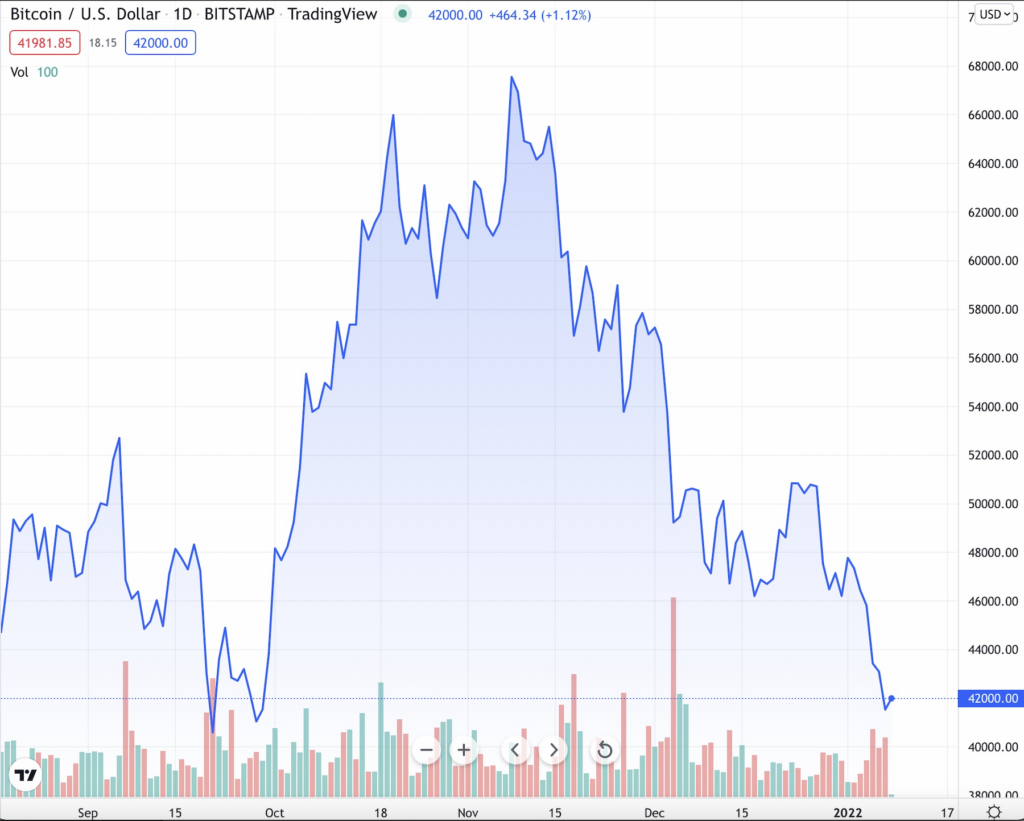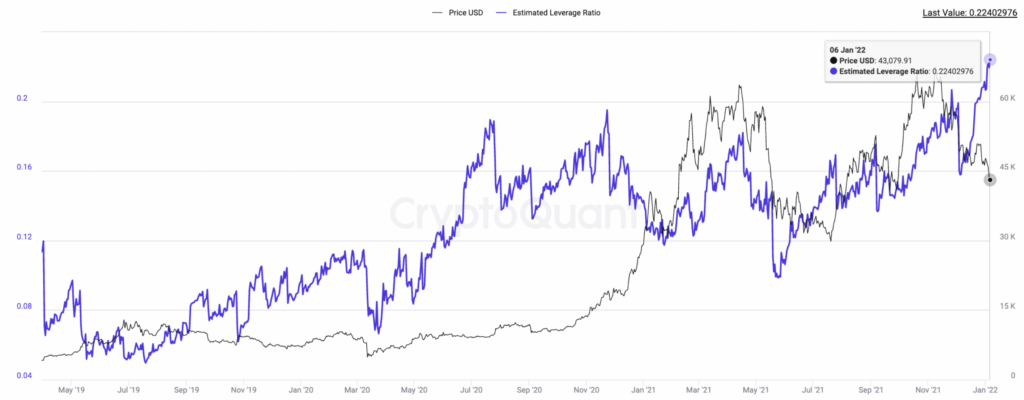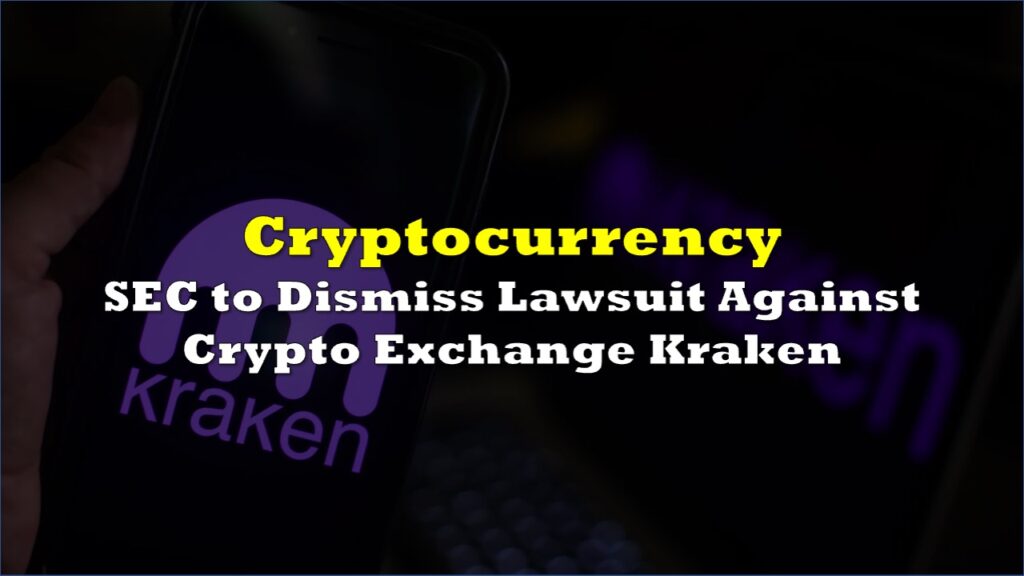Bitcoin continues to fall sharply and is testing the US$40,000 level that proved to be a floor in late September 2021. The digital currency is down around 10% just in the first few days of 2022 and has lost fully 40% of its value from the US$68,990 all-time high achieved only two months ago in early November 2021.
Since that time, Bitcoin has closely tracked the crumbling share prices of many high-valuation, high-risk tech companies.

Unfortunately, the news surrounding Bitcoin could get worse before it gets better. According to The Block, a well-regarded crypto news site, the U.S. Congress is preparing to hold a hearing on the (adverse) environmental effects of Bitcoin mining. More specifically, the Oversight and Investigations subcommittee of the House’s Energy and Commerce Committee is apparently assembling a witness list. The timing of this hearing has not yet been set, but it could occur before the end of January.
In all likelihood, very little of what will be discussed in front of television cameras will be favorable for Bitcoin. Anecdotal evidence like the headline in a late October 2021 Fortune magazine article, “Every single Bitcoin transaction, even buying a latte, consumes over US$100 in electricity,” will be thoroughly discussed. The New York Times previously reported that Bitcoin mining accounts for around 0.5% of all energy consumed in the world, a tenfold jump from five years ago, and more than the annual electricity consumption of Finland, a country of 5.5 million people.
The source of this heightened concern seems to be an October 7, 2021, letter to the leaders of the U.S. House of Representatives and the Senate expressing such fears. The letter was signed by more than 70 environmental groups, including the Sierra Club, Clean Energy Action and many others.
In turn, Senator Elizabeth Warren (Democrat from Massachusetts) in early December 2021 wrote a toughly-worded letter to the CEO of the Bitcoin mining firm Greenidge Generation Holdings Inc. (NASDAQ: GREE) questioning the environmental impact of its operations. For example, Senator Warren declared that in 2020 the company’s “plant emitted the equivalent of over 220,000 metric tons of carbon dioxide, comparable to the emissions of 50,000 cars.”
After China’s 2021 crackdown on Bitcoin, the U.S. is now home to the world’s largest accumulation of Bitcoin miners. About 35.4% of the Bitcoin network hash rate, or computing power, is U.S.-based, per the Cambridge Bitcoin Electricity Consumption Index. Kazakhstan (18.1%) and Russia (11.0%) were second and third, respectively, in the most recently published statistics.
(On January 5, 2022, Kazakhstan’s government shut down the internet — and therefore Bitcoin mining — throughout the country over intensifying protests and violence. The protests stemmed from a sharp rise in fuel prices, primarily natural gas, which is commonly used as an energy source for power and heat generation.)
Separately, the amount of leverage that investors are using to buy Bitcoin hit an all-time peak on January 6, 2022. Given this higher debt load, it is certainly possible that if Bitcoin were to continue to fall, forced liquidations could cause any decline to become even more severe.

Given Bitcoin’s historical pattern of extraordinary volatility, the digital currency’s dramatic fall over the last two months would seem to indicate a risk-tolerant investor could consider stepping in to buy soon. However, the near-term timing of a likely negative Congressional hearing, along with peak Bitcoin investor leverage, may suggest that continued caution is the proper course — at least for the next few weeks.
Bitcoin last traded at US$41,958.
Information for this briefing was found via Edgar and the companies mentioned. The author has no securities or affiliations related to this organization. Not a recommendation to buy or sell. Always do additional research and consult a professional before purchasing a security. The author holds no licenses.









